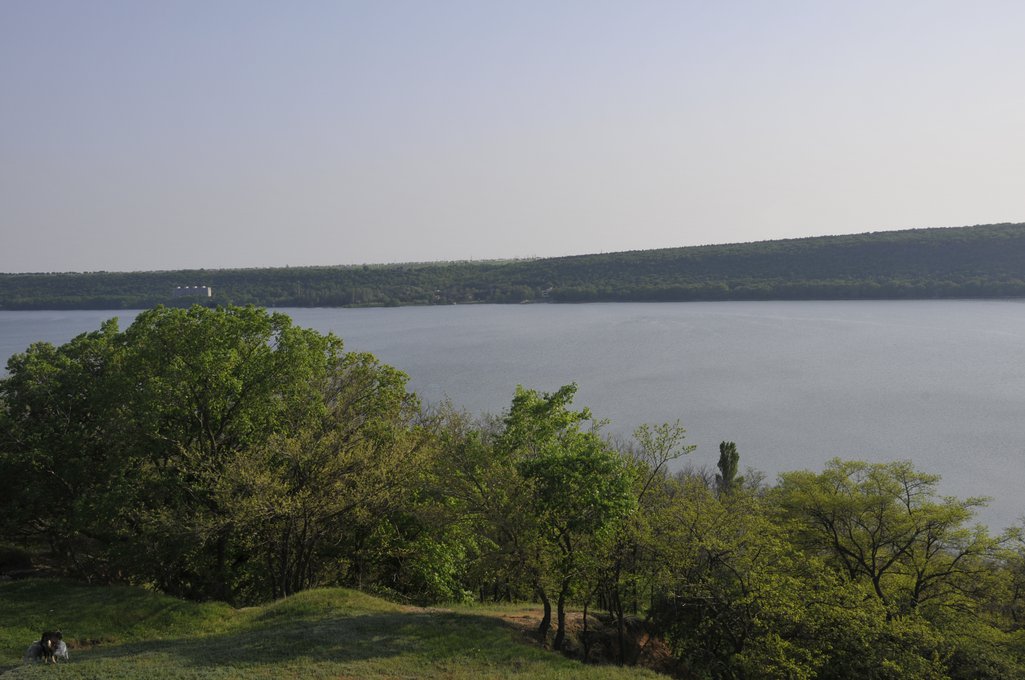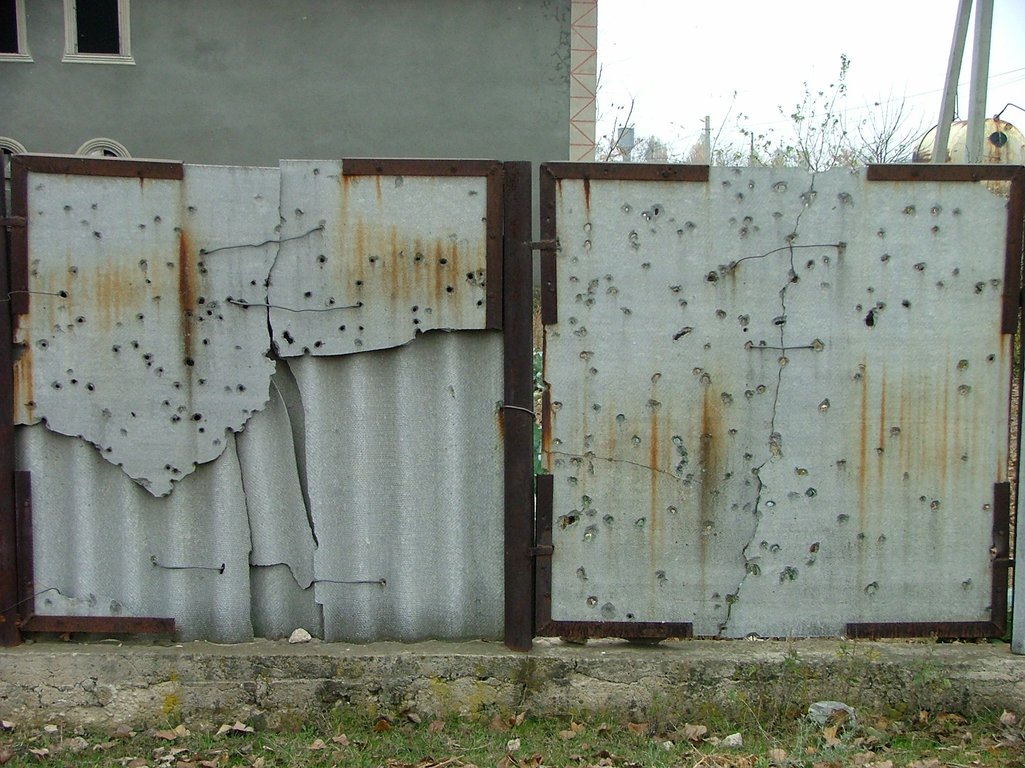It feels very strange to see Twitter full of Westerners wanting to find out about Transnistria. Previously, the Moldovan breakaway region, on the border with Ukraine, would only get occasional coverage as a ‘country that does not exist’.
For many, Transnistria is a geographical oddity, rife with crime, but with no clear geopolitical force behind it. But the explosions that rocked strategic locations in the separatist territory this week have put Transnistria back into the news. Moldovan President Maia Sandu has declared that the pressure to ramp up tensions comes from pro-Russian factions within Transnistria, while Russia called the attacks ‘acts of terrorism’.
In response, some analysts took to social media to tell their own stories of Transnistria, recounting how they discovered its existence in an accidental fashion, often through unpleasant travel experiences. For many that know of it, Transnistria is the archetypal ‘frozen conflict’ zone, a faux state in eastern Europe that looks and behaves like a Soviet relic, and a paradise for organised crime that then affects neighbouring states.
For me, it is the place where my family comes from.
A disappearing way of life
I grew up in Bucharest, but Transnistria was always a fascinating place, where I would visit friends and family for anniversaries and celebrations.
This summer, I am looking forward to returning for a longer period, in part to document stories on the ground, in part out of apprehension that should the situation deteriorate further, it may be the last time I can re-experience those places as the same relatively peaceful, picturesque locations that I remember from my childhood.
If you are unfamiliar with the region’s geography, Transnistria is a thin strip of land, stretching along the left bank of the Dniester River for much of Moldova’s border with Ukraine.
Before the collapse of the Soviet Union, Transnistria was home to much of the industrial infrastructure of the Moldovan Socialist Republic and was the most Russian-speaking part of the Republic. It effectively broke away from the administration in Chișinău, Moldova’s capital, after the 1992 war, when separatist forces backed by the Russian military fought against Moldovan troops.
Since then, most of the territory has been administered as a self-proclaimed breakaway republic, without any international recognition – not even from Moscow, at least for now.

In a more prosperous and stable context, Transnistria’s areas of stunning natural beauty would make great tourist destinations. In the Dubăsari district, the green, hilly banks of the Dniester River provide a scenic backdrop for limestone villages with houses painted in pastel blue shades.
In recent years, though, these settlements have been gradually fading away. It is a symptom of how the region’s rural way of life is disappearing – and of the failure to provide for people to continue living and working there. The reality of corrupt and poor governance – backed, in effect, by Moscow – is too much of a hurdle to allow such areas to thrive again through tourism or local industries. And so people are leaving, and their houses are crumbling.
For centuries, the region was crossed by trade routes that have encouraged the growth of diverse communities – Ukrainians, Romanians, Moldovans, Russians, Bulgarians, Poles, and members of Jewish communities from across the wider region. Partly because of the regime’s suspicion of minorities, and also because of its location on the Soviet Union’s western borders, it suffered greatly during Stalin’s terror in the late 1930s. Many families on the left bank of the Dniester River have stories of relatives that were sent to labour camps, or simply executed and buried in unmarked locations.
Scars of war
But the most visible scars today were left by the fighting that established the current boundaries of the self-declared ‘Pridnestrovian Moldavian Republic’ – to give Transnistria its official name. Villages and towns along the contact lines of the 1992 war still show signs of the fighting – schools, houses and garden fences pierced by shrapnel are everywhere.
Despite its complex history, Russian cultural influence remains strong here, reflected through the media and, in particular, popular TV channels. Even in the homes of my more Western-minded relatives, Russian television was always on – from films to talk shows, there was always something playing in the background.

Many in Transnistria also share a sense of nostalgia for the Soviet Union, at least for the 1970s and 1980s. People remember the period as a time when there was still a sense of community, with workplaces near home, good transport links, and frequent events – from parties to film screenings – even in villages and small towns. People’s lives were lived within a radius of a couple of miles – it was not perfect or wealthy, but it was predictable and relatively comfortable.
Now, these smaller settlements are depleted of people. Everybody leaves or is considering it – either for the West or the East, with the former becoming even more attractive after Moldova’s Association Agreements with the EU came into force in 2016. Romania also has a very lenient policy on offering citizenship to Moldovans, which is used as the main avenue to emigrate to Western Europe.
It is difficult to paint a crystal-clear picture of public opinion today since there are no recent and reliable polls from the breakaway territory. It is clear, however, that some people are genuinely pro-Russian and look with disdain at Moldova’s Western aspirations. Many others are just sceptical and seem to simply be preoccupied with the mundane worries of daily life. And of course, there still is a constituency that openly prefers re-integration within Moldova and its shift towards the West.
A kleptocratic regime
The reason behind the shrinking of villages and towns lies both in the shift in the demands of the global labour market and the reality of Transnistria’s capture by a kleptocratic, authoritarian regime in Tiraspol, the unrecognised state’s capital. Corruption and organised crime make many forms of business activity difficult and unpredictable, while infrastructure remains extremely poor.
Illegally propped up by Moscow politically and economically for the past 30 years, the Tiraspol kleptocracy fosters crime and human rights abuses. Human trafficking, kidnappings, killings: any form of violence you can think of, everyone in the region knows someone who has been affected.
The disturbing thing, though, is that despite the fact that this has been going on for decades, some people only find out about it – or find it noteworthy – now. In Ukraine, people were surprised to see Russia’s preposterous claims of genocide against ethnic Russians in the country. The use of puppet regimes in Donbas drew attention to ‘new’ geopolitical tricks by Russia. The use of ‘provocation’ operations by the Russian military to justify aggression in Ukraine gained notoriety after the warnings from Western intelligence agencies this winter. But it had all happened already, hidden in plain sight. The blueprint for everything that surprised the world in 2022 started in 1992, with Transnistria.
Russia, the separatist movement and the 1992 war
The separatist movement started under the arch-narrative that Russian-speaking citizens would be marginalised in a right-wing, nationalist Moldova. Russian military forces supported separatist militias before and during the 1992 conflict. The justification for the storming of the Dubăsari police station on 1 March that year by Transnistrian troops (effectively the act that started the war) was based on the false taccusation that Moldovan police were responsible for the killing of a separatist leader.
Following the war, Russia endorsed, but not recognised, the separatist republic. It has used it as a proxy to force Moldova into its orbit, whether through control over its biggest electricity plants in Dubăsari and Cuciurgan, as well as its gas pipelines; through recurring election fraud in favour of pro-Russian candidates; or through constant military pressure and organised crime.
All patterns of Russian aggression and interference have been present in Transnistria. The war and occupation really started in the wake of the USSR’s collapse. We were talking for 30 years about rapprochement with a democratising Russia, while its empire was still alive on our doorstep.
Given that the opportunity to learn from a cautionary tale has been missed, it is now time to think of ways of supporting Moldova in ensuring it remains stable amid these new attempts to destabilise the country. One healthy step in the right direction, beyond addressing the immediate security risk, would be understanding the needs of people living on both sides of the Dniester.
Source > Open Democracy
The Anti*Capitalist Resistance Editorial Board may not always agree with all of the content we repost but feel it is important to give left voices a platform and develop a space for comradely debate and disagreement.
Art Book Review Books Capitalism China Climate Emergency Conservative Government Conservative Party COVID-19 Creeping Fascism Economics EcoSocialism Elections Europe Event Video Far-Right Fascism Film Film Review France Gaza Global Police State History Imperialism Israel Italy Keir Starmer Labour Party London Long Read Marxism Marxist Theory Migrants NATO Palestine pandemic Protest Russia Solidarity Statement Trade Unionism Trans*Mission Ukraine United States of America War

